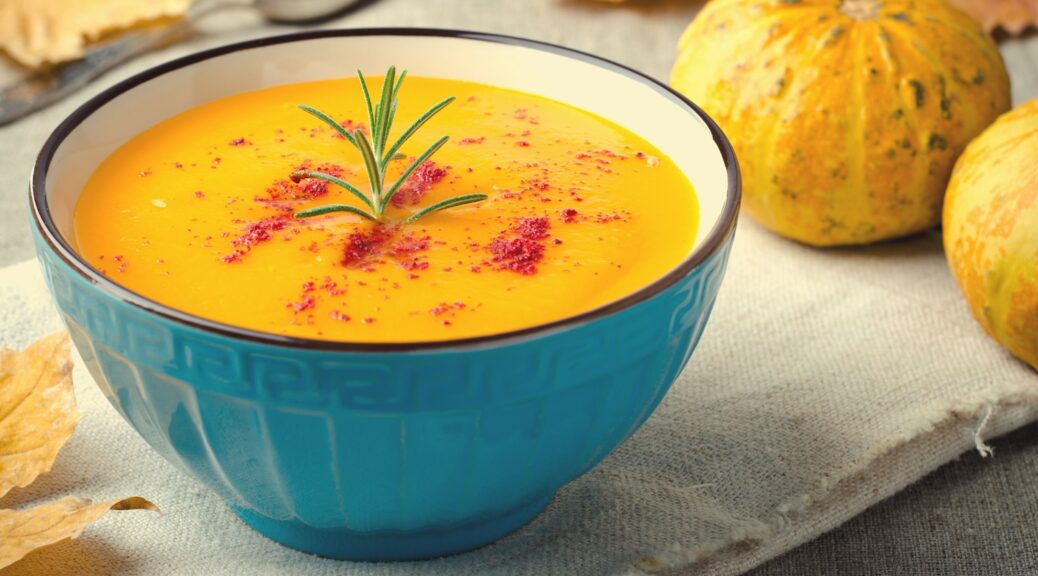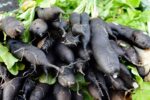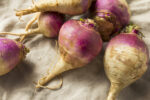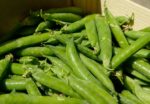
How to Make Tasty Vegetable Purées
A purée is a cooked food, usually made from fruits or vegetables. The cooked food is pushed through a sieve, or put in a blender or food processor to achieve a smooth, creamy consistency. Of course, in the 1800s, only sieves were used since blenders and food processors run on electricity.
Purées can be similar to cream soups, which are made with a base of cream or milk. Cream soups usually are made with vegetables, too, which are cooked until tender, then blended into the soup. Cream soups might contain chunks of meat for added flavor, but purées will always be smooth throughout.
INFORMATION BELOW COMPILED FROM 1800s COOKBOOKS
PURÉES
Purées are made with vegetables, but when the flesh or poultry or other birds is mashed through a sieve after being cooked, it is sometimes called a purée also.
Of Dry Beans, white or colored, Kidney, Lima, or any other kind — Dry beans must be soaked in cold water, or even in lukewarm water, when in a hurry. According to the nature of the beans, they must be soaked for from six to twenty-four hours.
Soak a quart of beans as directed above. Drain and put them in a saucepan with one-third of the bones of a ham, or about four ounces of salt pork. Cover with cold water, season with a bay-leaf, a sprig of thyme, two of parsley, two middling-sized onions with two cloves stuck in them, and a carrot cut in pieces. When the whole is well cooked, throw away thyme, bay-leaf, onions, and cloves. Mash well through a colander all the rest except the salt pork.
While mashing them through the colander, wet them with some of the water in which they have boiled, else it would be difficult and long.
When mashed, put them in a saucepan with a little broth or water, salt, and two ounces of butter. Stir now and then till the butter is melted and thoroughly mixed with the rest, and it is ready for use. The quantity of broth or water is according to how thick or thin they are wanted. The salt pork is good to eat.
Of Lentils — It is made in the same way as that of beans, except that they do not require to be soaked more than five or six hours in cold water.
Of Peas (dry or split) — Proceed as for lentils in every particular.
Of Green Peas — Wash a quart of green peas in cold water, and drain. Put two quarts of cold water on the fire in a saucepan with a little salt, and at the first boil throw the peas in. Season with three or four sprigs of parsley, one of thyme, two onions, two cloves, a carrot in slices, salt, and pepper. Boil till tender. It may take only two minutes, or it may require half an hour, according to how tender the peas are. Mash through a colander, and finish like purée of beans, using either broth or water. With broth it is richer and better.
Of Lima Beans — Proceed for green Limas as for green peas.
Of Sweet Corn — It is made like that of green peas.
Of Asparagus — Cut the eatable part of the asparagus in pieces, and proceed as for purée of green peas.
Of Potatoes — Steam a quart of potatoes and mash them well. Put them in a saucepan with half a pint of milk, two ounces butter, and salt to taste. Set on the fire, and stir now and then. It takes about fifteen minutes after being set back on the fire.
Another way — Proceed as above, using broth or water instead of milk.
Of Jerusalem Artichokes — Prepared as potatoes.
Of Carrots — Clean well and cut in slices a dozen middling-sized carrots. Put them in a stew-pan with four ounces of butter and set on the fire. When about half fried, cover with broth or water. Season with half a bay-leaf, a small sprig of thyme, one of parsley, and a small onion and a clove stuck in it. When the whole is well cooked, throw away onion, clove, bay-leaf, and thyme, and mash the rest through a colander. Then put it back on the fire with a little butter. Simmer for about two hours, stirring occasionally, and it is made.
In case it should turn too thick, add broth or water.
The longer they are simmered, the better the taste.
Of Turnips — Proceed as with carrots in every particular.
Of Celery — Clean the celery well, wash and cut it in pieces, and prepare as purée of carrots, adding a teaspoon of sugar.
Of Cauliflowers — Separate the branches and throw them in boiling water and salt. Boil two minutes and drain. Put them on the fire with broth or water, enough just to cover them, two or three stalks of parsley, and salt to season. Boil gently till tender, remove the parsley, and mash through a colander. Put back on the fire with a little butter and white pepper, simmer about ten minutes, stirring now and then, and it is ready for use.
Instead of butter, some cream may be added.
Of Pumpkin — Made exactly the same as that of cauliflowers, after the pumpkin is peeled and cut in pieces.
Of Squash — Same as pumpkin.
Of Spinach — Clean the spinach and cut off the stem; the leaf only is good. Wash and drain it, put cold water and a little salt on the fire, and throw the spinach in at the first boil. When tender, drain and drop immediately in cold water, drain again, and then chop it very fine. If the spinach is young and tender, it takes only two or three minutes boiling before chopping it.
After being chopped, it may be mashed through a sieve to have it finer. Put it back on the fire without any water at all, and when it gets rather dry, add a little flour. Stir and mix, add a little gravy or good broth, stir, salt to taste, and it is ready for use. From the time it is put back on the fire, it takes about five or six minutes to finish it.
Of Sorrel — Proceed as with spinach in every particular.
Of Onions — Peel and quarter a dozen onions and blanch for eight minutes. Drain and put them in a saucepan with four or six ounces of butter, according to the size of the onions. Set on a slow fire, stir now and then till well done, then season with salt and a little flour. Stir for two minutes to cook the flour, and mix it thoroughly with the rest. Take from the fire, add cream, little by little, stirring the while. It does not require much cream to make the purée of a proper thickness. Mash through a sieve or fine colander, add a pinch of sugar, and it is ready for use. It is good served with nearly every kind of meat.
Of Chestnuts — Remove the skin of a quart of chestnuts and drop them in boiling water, with a little salt. As soon as the under skin comes off easily, take them from the fire, drain, drop them in cold water, and then remove the white skin. Put them in a saucepan with about one quart of broth, set on the fire and boil gently till well done, and mash through a colander.
Then put the chestnuts and what is left of the broth in a saucepan, set on the fire, stir, add a pinch of sugar and an ounce of butter; give one boil, and it is made.
=================================================
Have you ever eaten purées? Please Leave a Comment Below.
=================================================





2 thoughts on “How to Make Tasty Vegetable Purées”
I’ve had numerous purées over the years. Those I remember are: asparagus, spinach, courgette, cauliflower; All sorts of fruits, especially raspberries; Salmon, smoked salmon (made with cream IIRC), buckling… I think there have been others, too numerous to remember, let alone list 🙂
Our daughter makes a courgette purée which is, as they say, to die for.
You’re lucky to have been able to try all these purées. I’ve had spinach and cauliflower purées. And once I had a cold cucumber soup in a restaurant, which was like a purée. It was good, too.